AILANNTHUS ALTISSIMA
(TREE OF HEAVEN)
Here’s everything you need to know about the Tree Of Heaven and why you’ll want to get rid of it
There are exotic plants and insects just about everywhere you look. Many people have things growing in their yard that wouldn’t naturally exist there, but through one way or another they’ve arrived and they’re doing fine. But in some cases an exotic species can become a serious problem. Once it has become a problem it’s identified as an invasive species. That’s exactly how the Tree of Heaven is categorized.
There’s a few things this page aims to help with in regard to Tree of Heaven. If you read all the way through, you’ll be fully prepared to help rid the region of this problematic plant!
Read on to learn:
- What the Tree of Heaven is
- How to identify it
- Why it’s such a problem and why it’s considered an invasive species
- How to effectively remove it
What Is The Tree Of Heaven
Tree Of Heaven is the common name for Ailanthus altissima. You may also hear it called “Chinese sumac” or “stinking sumac” because it looks a lot like a sumac tree. In China they sometimes call it chouchun, which means “foul smelling tree”. While it may look as attractive as a sumac, this exotic species has become a serious problem here in the United States.
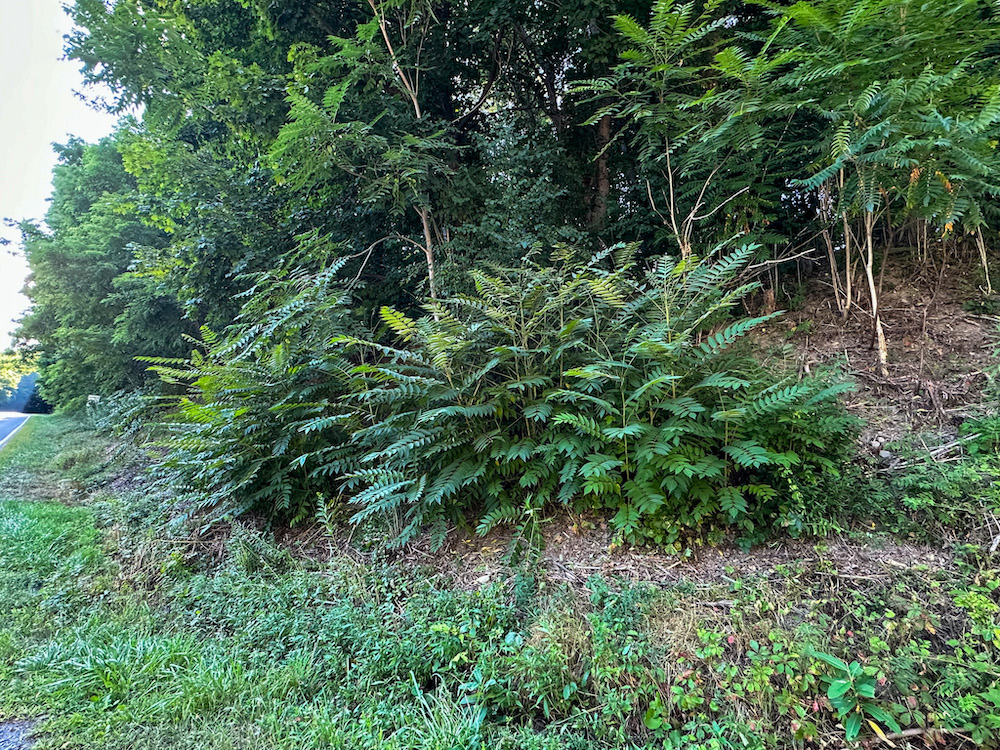
Ailanthus altissima was brought here purposefully in the 1700’s from China. Like many exotic plants, the idea was to introduce flora to this country that would be attractive and useful. It’s actually a pretty great shade tree and grows super fast, which is one of the reasons it was originally deemed so useful.
Early in its introduction to the United States the Tree of Heaven earned a great reputation. In fact, urban planners started using it in their development plans. At the time, they didn’t realize all the problems it would create.
Now we know and we’ve learned a lot of lessons. Luckily, it might not be too late. We could turn things around if we start working now.
How To Identify Tree of Heaven
Because it looks so much like a sumac, it can be difficult at first to determine which you’ve got. Luckily, there are some really distinct markers you can use. Once you’ve learned how to identify a Tree of Heaven, you’ll likely start seeing them everywhere.
Leaves
A leaf from the Tree of Heaven can be anywhere from one inch to three feet in length depending on the maturity of the tree. The larger leaves will be made up of leaflets that can grow up to six inches long each. These leaflets have 2-to-4 little notches at their base giving them a kind of irregular shape closer to the branch. Those notches also carry glands which are one of the things that give off their infamous foul odor.
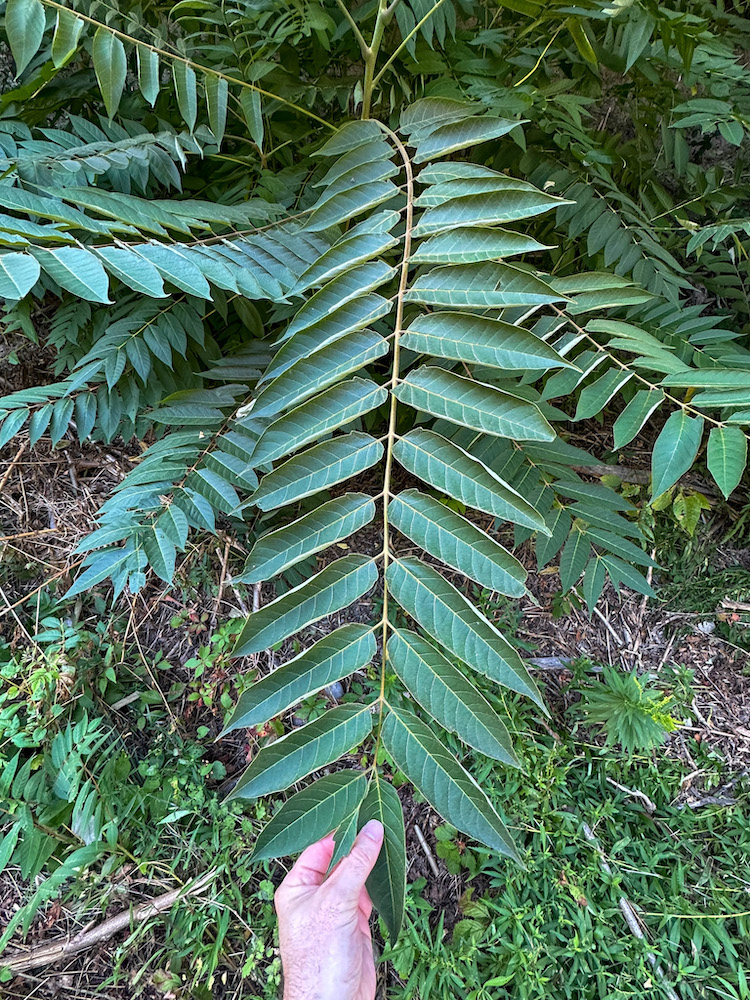
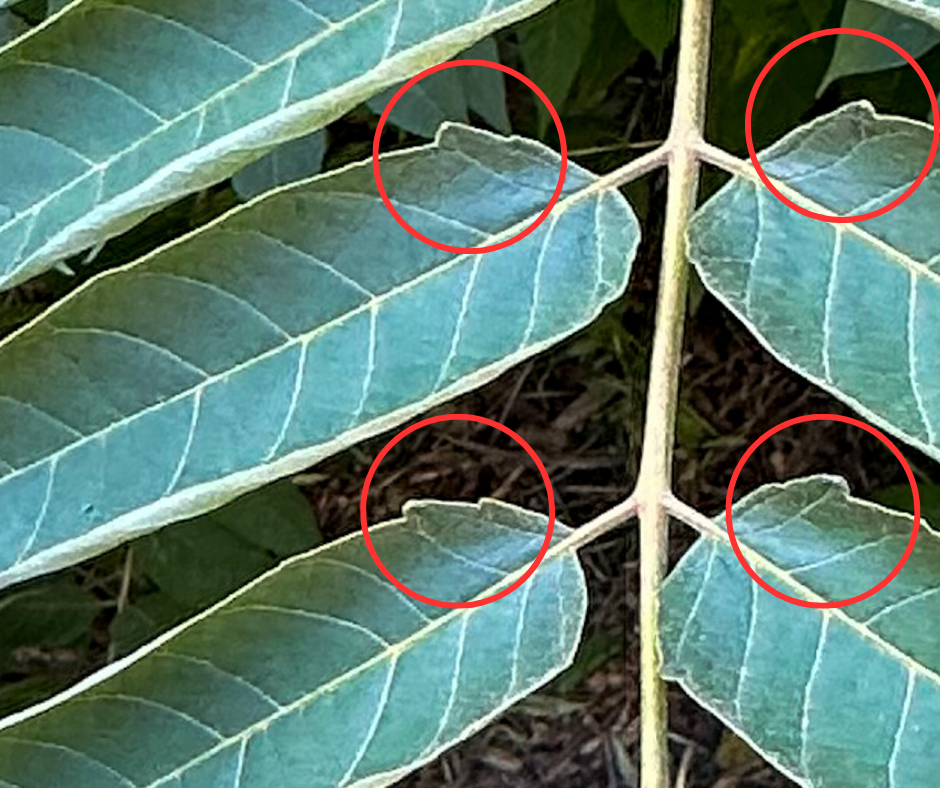
Smell
There’s a reason it’s called “stinking sumac”. Both the leaflet’s glands and the woody branches carry a foul odor which you’ll notice if they’re exposed. If it’s winter and you don’t have any leaves go ahead and break a twig and smell it. If it smells like peanut butter that’s gone bad or your old gym socks, you’ve likely got a Tree of Heaven.
Bark
The tricky part of identifying Tree of Heaven by the bark, is that it will change as the tree ages. When it’s young the bark will be smooth. As the tree ages it will change to a darker shade of gray and develop bumps. The bark of a mature Tree of Heaven is often compared to the skin of a cantaloupe.
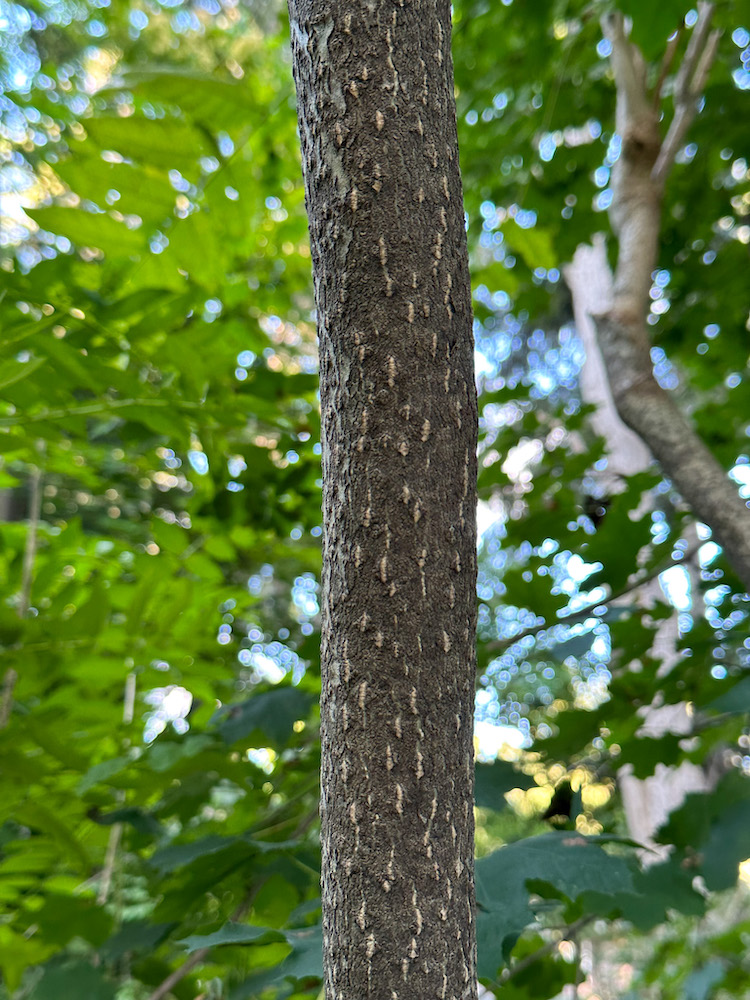
Why You Don't Want It
Here’s the hardest part of our job: convincing you why this fast growing, somewhat attractive tree is something you don’t want.
The whole reason it was brought to the United States in the first place is because it grows quickly and provides a lot of great shade. At first that probably seems great. Most people probably see an innocent looking tree and can’t figure out what the problem is.
So, here’s the problem(s).
It Grows TOO Fast
A mature female Tree of Heaven can produce between 300,00 and 350,000 seeds per year. Really, that’s not even the big problem! Most of the new sprouts come from roots. If an existing mature tree is allowed to, its root system can grow far and wide giving those roots a chance to sprout new trees. If you have a mature tree, you likely have a bunch more smaller trees nearby.
The problem here is that those communities of trees can easily crowd out the other stuff you want growing. That other plant life can’t survive with the Tree of Heaven taking over. If they’re allowed to take over, you could easily just end up with the Tree of Heaven and nothing else!
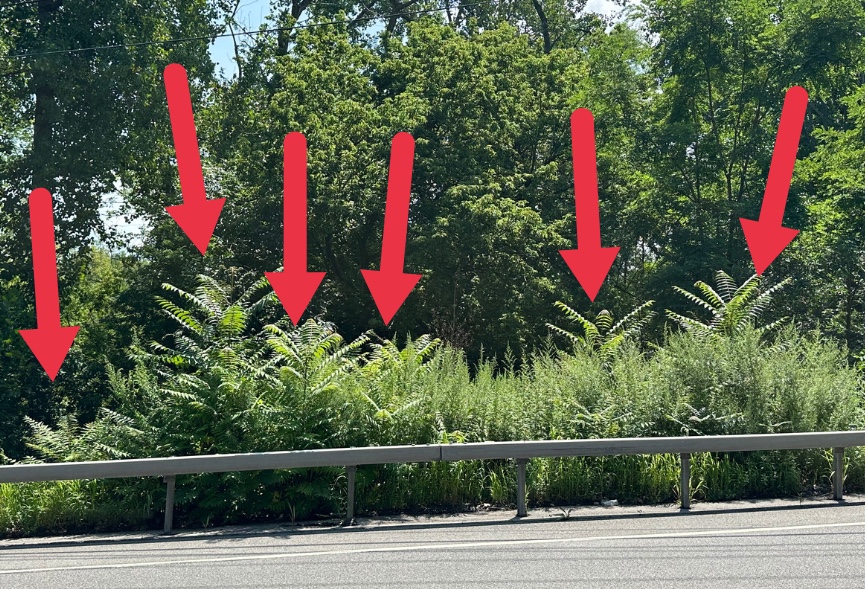
Hard To Get Rid Of
Because new trees can sprout from root systems, you can’t just chop a tree down and hope for the best. A mature tree’s root system can easily grow as wide as the tree is tall. That means you could have a tree sprouting 20-30 feet from the one you just cut down. If they’re allowed to proliferate, getting rid of them could be a big game of Whack-A-Mole.
Attracts The Spotted Lanternfly
Another invasive species that is causing a ton of havoc in the United States is the Spotted Lanternfly. Their population is spreading here quickly because they don’t have any natural means to keep them in check.
Guess which host the Spotted Lanternfly prefers?
The Tree Of Heaven is the first choice for a Spotted Lanternfly to make home. So if you have a collection of the trees, you could also end up with a swarm of the insects. Then you’ll have two invasive species in the same space!
Does Not Help Local Ecosystem
One of the benefits of using native plantlife is the way those plants support native insects and animals. If you look closely at the Ailanthus altissima you may notice something strange–the absence of wildlife. The insects that naturally occur in our region can’t really use the tree, which means birds have no use for it since they eat the insects. Without birds, other animals won’t be hunting around those trees. The Tree of Heaven interrupts the whole natural cycle of our local ecosystem. It spreads and takes over without giving anything back to the ecological community it’s in.
How To Get Rid Of Tree Of Heaven
Now that you’ve learned how damaging the Tree of Heaven can be to our ecosystem, let’s talk about how to get rid of it.
The problem with an invasive species is that they are usually prolific because they don’t have a natural check in place. Unfortunately, there isn’t a natural way of effectively culling this species, so humans are going to have to get involved.
Herbicide
Michael has been using natural remedies and support systems for gardens and lawns for decades. Wherever possible, we feel strongly that herbicides should be avoided.
Unfortunately, in the case of Tree of Heaven, the non-herbicide options are labor-intensive and time consuming. Plus, some of the non-herbicide options can take years to effectively kill the tree. While Naturally Green rarely supports the use of chemicals, we feel it’s warranted with the Tree of Heaven.
To apply, cut the trunk of the tree very low to the surface of the ground. Preferably you want the cut about one inch from the surface. Then using a brush, apply a small amount of RoundUp to the exposed crosscut of the trunk. By using a brush, you’ll ensure that the herbicide is only applied to the trunk without potentially harming surrounding plant life. Depending on the size of the tree, you may only need a few small drops.
The roots will receive the herbicide this way, and they’ll die off under the ground.
Constant Cutting
One option that homeowners can use to avoid herbicide is to just cut any newly emerging sprouts. Unfortunately, this won’t really harm the roots enough to kill them right off. It’s quite possible you’ll get new trees emerging year after year. If you don’t mind staying on top of things and just cutting them anytime you find one, this may be a good solution.
Girdling
This is another time consuming method and it’s mostly used on mature trees. Girdling includes removing the bark and the first layer surrounding the trunk. This effectively interrupts the messaging system between the leaves and roots and will slowly cause the entire tree to die. Unfortunately, depending on the age and health of the tree, this could take years.
LET US HELP
Getting rid of a Tree Of Heaven is something you can easily do yourself, but if you’d rather let pros do it, we’re happy to help! One of our specialities is scouting for invasive species and enacting a plan to rid your property of any pests. If you’d like our help in any way, don’t hesitate to reach out. We can assist with identifying species, providing you a plan with how you can remedy the problem yourself, or just take care of the entire problem while you relax!
